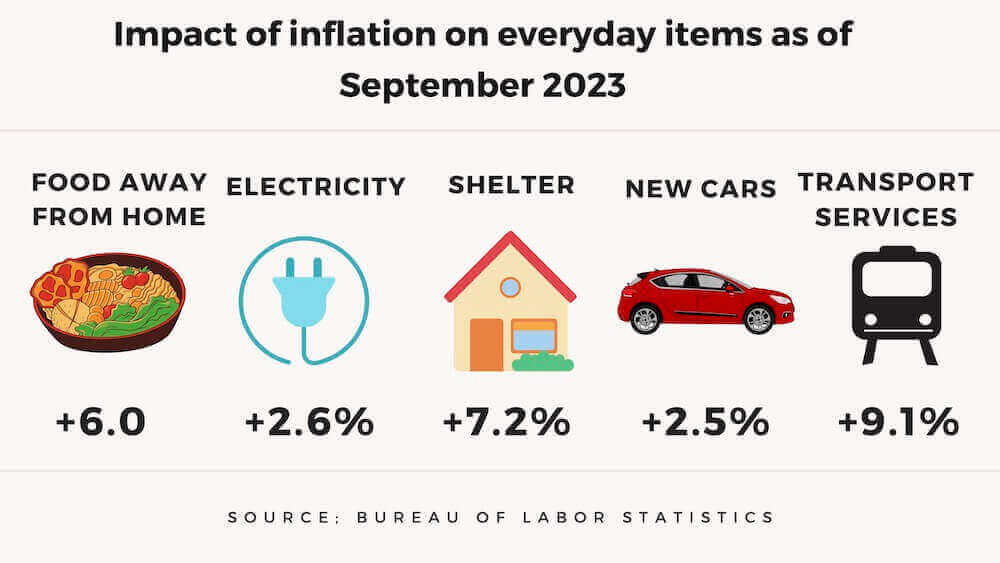This article has been updated to reflect the official announcement of the 2024 COLA.
2023 COLA Highest in 40 Years
The amount of the 2024 cost of living adjustment (COLA) will be announced on October 12, 2023. Last year, the COLA was 8.7%— the highest in more than 40 years. The 2023 COLA will be considerably less. Most estimates predicted that the 2024 COLA would be about 3.2%, which turned out to be prescient since it was this exact amount per the October 12, 2023 announcement.
While the lower COLA may disappoint many federal retirees, the reality is that a high COLA is not good news. COLAs do not fully compensate for inflation. Over time, the purchasing power of the income of a retired person goes down.
Retirees are better off financially with lower inflation and smaller COLAs. Because COLAs do not fully replace the lost purchasing power of retirement income, lower inflation and lower COLAs usually do a better job of preserving the purchasing power of someone who is retired. While large COLA payments made in response to high inflation provide more dollars, each dollar actually buys less than these dollars did in previous years. With that in mind, seniors probably should view falling COLA forecasts as good news.
How the COLA Calculation Works
Here is how the COLA calculation works:
- CPI-W readings are taken from the third quarter (July – September) of the current year.
- These data are compared to the average CPI-W reading from the third quarter of the previous year (2022).
- The average reading from the third quarter of the current year (2023) is compared to the figure from the third quarter of 2022.
- If the average CPI-W reading goes up in 2023, then the difference, rounded to the nearest 0.1%, is what beneficiaries will receive as an increase in 2024.
- If the figure is lower— indicating deflation—no adjustment is made. That happened several times under the Obama administration.
FERS vs. CSRS and Calculating the Annual COLA
When approaching retirement, most people calculate how much they will need to maintain an acceptable standard of living. For federal employees, this means considering how much is in your Thrift Savings Plan (TSP) account, how much you will receive from a federal annuity payment, Social Security payments, and other sources of income.
Not many federal employees are still working under the older Civil Service Retirement System (CSRS). The number of CSRS employees is now probably 3% or less. Most are under the newer Federal Employee Retirement System (FERS).
The CSRS system was created in 1920. Federal employees hired before January 1, 1984, were in the CSRS system. FERS was created in 1987. There is a difference in calculating the COLA for those under the CSRS and FERS systems.
Calculating the COLA for FERS
- For Federal Employees Retirement System (FERS) or FERS Special benefits, if the increase in the CPI is 2 percent or less, the Cost-of-Living Adjustment (COLA) is equal to the CPI increase.
- If the CPI increase is more than 2 percent but no more than 3 percent, the Cost-of-Living Adjustment is 2 percent.
- If the CPI increase is more than 3 percent, the adjustment is 1 percent less than the CPI increase. The new amount is rounded down to the next whole dollar.
- To get the full COLA, a retiree or survivor annuitant must have been in receipt of the payment for a full year.
- If a person has not received the payment for a full year, the increase is prorated under both plans. Prorated accounts receive one-twelfth of the increase for each month they have received benefits. COLAs were first prorated in April 1982.
- Adjustments to benefits for children are never prorated.
- Federal Employees Retirement System (FERS) and FERS Special Cost-of-Living Adjustments are not provided until age 62, except for disability, survivor benefits, and other special provision retirements.
- FERS disability retirees get the adjustment, except when they are receiving a disability annuity based on 60 percent of their high-3 average salary.
- Also, under FERS, if you have a CSRS component, the component is subject to the CSRS COLA calculation.
The table below illustrates this:
| If the CPI is: | Then the COLA is: |
|---|---|
| <= 2% | COLA = CPI increase |
| > 2% and <= 3% | COLA = 2% |
| > 3% | COLA = CPI – 1% |
The 2024 COLA is 3.2% per the announcement on October 12, 2023. This means most eligible federal retirees under FERS will get a 2.2% COLA per the above formula.
Calculating the COLA for CSRS Employees
For Civil Service Retirement System (CSRS) benefits, the percentage increase is applied to your monthly benefit amount before any deductions are withheld. The payment is rounded down to the next whole dollar.
Of course, there are some exceptions to these calculations. As noted by the Office of Personnel Management (OPM), “A benefit will not be increased if it would cause the annuitant to receive payments in excess of any cap amount specified by law.”
For those who may be asking how they can determine their COLA for 2024, your answer will depend on several variables, including which retirement system applies to you, how many months you started to receive your retirement payment in the past year, whether the FERS special benefits apply to you, your age, etc.
Why Do Federal Retirees Under FERS Get a Different COLA?
When the CSRS was created, the Social Security System did not exist. The CSRS was created in 1920. The Social Security Act law was enacted on August 14, 1935.
When FERS was created in 1987, federal employees under FERS received benefits that CSRS employees did not receive. As a result, Congress created a system of calculating the COLA in different ways as receiving the full COLA in years when inflation ran higher was not necessary since other benefits were already in place.
What are those benefits?
Under FERS, federal employees get the following:
- Matching funds from the federal government (up to 5%) to invest in their Thrift Savings Plan (TSP) accounts
- Social Security
- Annuity payments in retirement
Also, Social Security and TSP benefits are portable. If a federal employee leaves a federal job, the benefits accompany the employee. In other words, FERS gives federal employees the opportunity to leave a federal job without giving up some of what they have earned.
Abbreviated History of COLAs
Here are the annual COLA annual percentage increases since 2010.
- January 2010 — 0.0%
- January 2011 — 0.0%
- January 2012 — 3.6%
- January 2013 — 1.7%
- January 2014 — 1.5%
- January 2015 — 1.7%
- January 2016 — 0.0%
- January 2017 — 0.3%
- January 2018 — 2.0%
- January 2019 — 2.8%
- January 2020 — 1.6%
- January 2021 — 1.3%
- January 2022 — 5.9%
- January 2023 — 8.7%
- January 2024 – 3.2%
The 2024 COLA was announced on October 12, 2023. For more information, see our article detailing the announcement.






